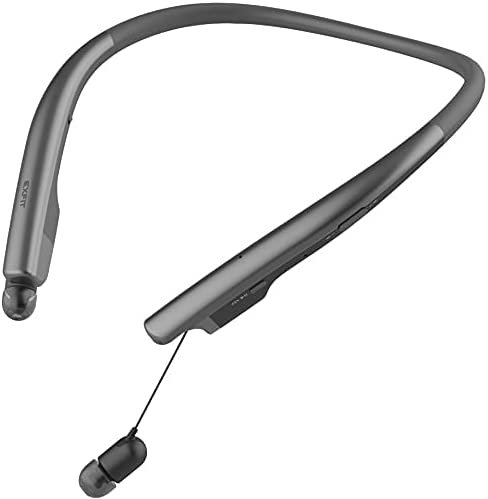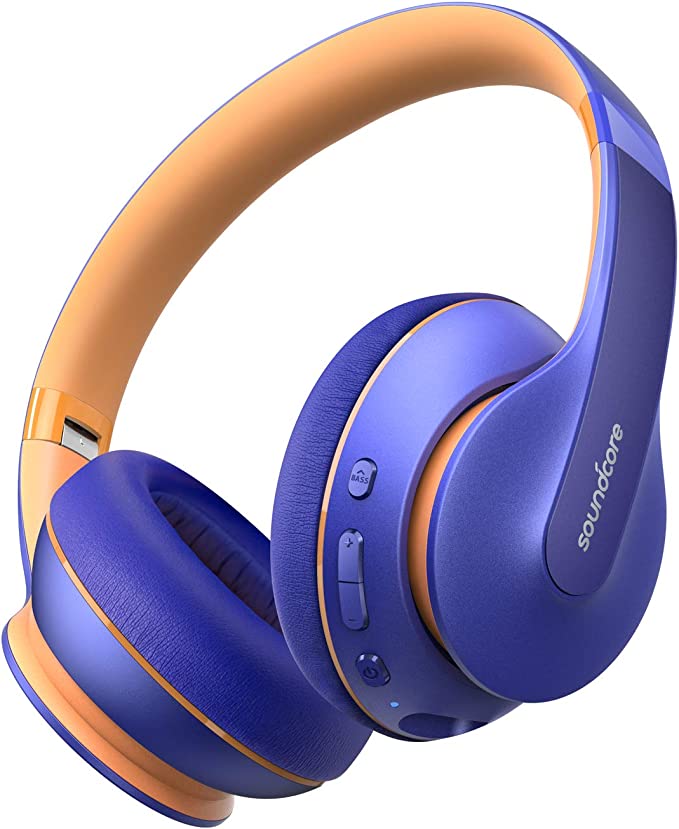We live in a world saturated with sound. From the insistent hum of city traffic and the background chatter of open-plan offices to the drone of airplane engines, noise is an almost constant companion. While sound connects us, informs us, and entertains us, unwanted noise can often feel like an intrusion – scattering our focus, fraying our nerves, and diminishing our enjoyment of moments that crave quietude. But what if we could reclaim some control over our personal soundscape? What if technology could offer us a dial to turn down the world’s volume, or selectively tune into what matters?
This desire for auditory control has fueled the rise of personal audio technologies, particularly Active Noise Cancellation (ANC). These technologies promise a sanctuary of silence, or at least, significantly less noise. Products like the KVIDIO WH304 Active Noise Cancelling Headphones represent how these once-premium features are becoming increasingly accessible. Let’s use these headphones as our case study, not just to see what they offer, but to explore the fascinating science that makes such audio magic possible.

The Acoustic Dance: Unveiling Active Noise Cancellation (ANC)
How exactly do headphones like the WH304 seemingly erase noise? It’s not magic, but a clever application of physics – specifically, the principle of wave interference. Think of sound traveling through the air as waves, much like ripples spreading across a pond. These waves have peaks and troughs. Active Noise Cancellation is essentially an elegant feat of acoustic engineering designed to counteract these incoming noise waves.
Here’s how it typically works: Tiny microphones positioned on the outside of the headphone earcups act as vigilant scouts. Their job is to listen to the ambient noise encroaching upon your ears – that persistent hum of an air conditioner or the low rumble of a bus engine. This captured sound signal is then instantly relayed to a sophisticated electronic processor within the headphones – the ‘command center’.
This processor analyzes the incoming noise wave in real-time and, with remarkable speed, generates a brand new sound wave that is the exact inverse, or ‘anti-noise,’ of the original. This anti-noise wave has peaks where the original noise wave has troughs, and troughs where it has peaks. Finally, small speakers inside the earcups emit this precisely crafted anti-noise wave.
When the original incoming noise wave and the newly generated anti-noise wave meet at your eardrum, they engage in a sort of acoustic dance. Because they are perfect opposites (180 degrees out of phase), they cancel each other out through a phenomenon called destructive interference. Imagine two opposing forces meeting and neutralizing each other. The result isn’t absolute silence (especially for sudden, sharp noises), but a significant reduction in the perceived level of constant, low-frequency background noise.
KVIDIO states that their WH304 headphones are designed using this principle, aiming to block out up to 95% of ambient noise. While the effectiveness can vary depending on the type of noise and the specific environment, the core science targets those monotonous drones that often contribute most to auditory fatigue. Picture yourself in a bustling coffee shop, trying to focus on work. With ANC activated, the surrounding chatter might fade into a much less intrusive murmur, allowing your thoughts to flow more freely. Or consider a long flight – the relentless engine roar softens, making the journey significantly more peaceful and less draining. ANC acts like a sophisticated filter, selectively quieting the world around you.

Opening the Sound Window: The Wisdom of Transparency Mode
While creating a bubble of silence is often the goal, there are countless situations where being completely cut off from your surroundings isn’t just inconvenient, it can be unsafe. Crossing a busy street, listening for station announcements on a train platform, or needing to have a quick conversation with a colleague – these moments demand awareness. This is where the counterpart to ANC, often called Transparency Mode (a feature included in the WH304), demonstrates its value.
Intriguingly, Transparency Mode often leverages the very same external microphones used for ANC. However, instead of generating anti-noise to cancel external sounds, the system takes a different approach. It captures specific ambient sounds – like voices or traffic alerts – processes them, and then intentionally feeds them into the headphones, mixing them with your music or podcast if you choose.
Think of it as opening a controllable ‘sound window’ to the outside world. It allows crucial environmental cues to reach your ears without requiring you to remove the headphones entirely. It’s akin to having a volume dial for the world around you, letting you decide how much external reality to let in. For instance, walking down a city sidewalk, Transparency Mode allows you to hear approaching vehicles or bicycle bells, enhancing your safety. Or, if someone asks you a quick question, a simple button press can activate Transparency Mode, allowing you to hear and respond naturally before diving back into your audio. It’s about providing flexibility and situational awareness, complementing ANC rather than simply opposing it.

The Energy Marathon: Powering 65 Hours of Auditory Freedom
A major hurdle for any wireless device is battery life. The constant anxiety of seeing that battery percentage dwindle can detract from the very freedom wireless technology promises. This makes the battery life claims for the KVIDIO WH304 particularly noteworthy: up to 65 hours of playtime in standard mode, and a still substantial 40 hours with ANC engaged, according to the product description. What sorcery allows for such endurance?
It’s less sorcery and more a confluence of smart engineering choices:
- The Power Reservoir: At its core, longevity requires a decent energy source. The WH304 houses a 500mAh battery (as listed in the specifications). This capacity provides the fundamental fuel for extended operation.
- Sipping, Not Gulping: Modern electronics are designed with energy efficiency in mind. The WH304 utilizes Bluetooth 5.0. This iteration of the Bluetooth standard is generally recognized for improvements in data transfer efficiency and, crucially, power management compared to older versions. Combined with what KVIDIO describes as “power saving technology” – likely optimized chipsets and internal components – the headphones consume less energy during operation, stretching every milliamp-hour further. Sixty-five hours is enough time to fly from New York to Sydney and back, with hours to spare – a testament to how far battery and wireless tech have come.
- The Quick Sprint – Fast Charging: Even marathon runners need quick bursts of energy sometimes. The WH304 incorporates fast charging capabilities. The description states that a mere 5-minute charge can deliver approximately 4 hours of playtime. This feature relies on advanced battery chemistry (typically Lithium-Ion) and charging circuitry that can safely accept higher power input for short periods. It’s incredibly practical for those moments when you realize you forgot to charge your headphones before heading out the door – a quick plug-in during your morning routine can provide enough power for your commute or workout.
Together, these elements – a reasonably sized battery, efficient wireless technology, optimized power consumption, and the convenience of fast charging – work in concert to combat battery anxiety and offer genuine, long-lasting wireless freedom.

Beyond Silence: Sound, Connection, and Comfort
While noise management and battery life are crucial, the ultimate purpose of headphones is, of course, listening. KVIDIO aims for a pleasing audio experience with the WH304, describing its sound signature as delivering “Hi-Fi Stereo Sound” and “Deep Bass.” Behind these subjective descriptions often lies further technology. The mention of “Advanced DSP” (Digital Signal Processing) is significant here.
DSP involves using microprocessors to manipulate audio signals in real-time. This digital ‘sculpting’ can serve multiple purposes. As KVIDIO suggests, it might be used to enhance voice clarity during phone calls, perhaps by filtering out background noise picked up by the microphone or equalizing vocal frequencies. DSP can also be employed to tune the overall sound profile of the headphones, shaping the bass, mids, and treble to achieve that desired “Hi-Fi” or “Deep Bass” character.
The wireless connection itself is handled by Bluetooth 5.0, offering a stable link within a claimed range of up to 10 meters (33 feet). A particularly convenient feature listed for the WH304 is its ability to connect to two devices simultaneously. Imagine being connected to your laptop for a video conference while also paired with your phone. If a call comes in on your phone, you can easily switch over without a complicated re-pairing process.
And for those times when Bluetooth isn’t an option – perhaps the battery has finally run down after its marathon, or you’re connecting to a device without Bluetooth (like an older MP3 player or an in-flight entertainment system) – the inclusion of a standard 3.5mm audio cable provides a reliable wired backup. (It’s worth noting the source specifies the microphone only works in Bluetooth mode).
Finally, technology is only useful if it’s comfortable to use. Being an over-ear design, the WH304 aims for comfort during long listening sessions with soft, memory-protein earpads designed to gently enclose the ears. An adjustable headband caters to different head sizes. The listed weight of 0.8 lbs (around 363 grams) places it in a typical range for over-ear headphones. Furthermore, the earcups reportedly rotate, allowing the headphones to lie flat – a practical touch for storage and transport in a bag.

Conclusion: Technology Empowering Personal Soundscapes
The journey through the features of the KVIDIO WH304 headphones reveals more than just a list of specifications. It showcases how sophisticated audio technologies – the delicate physics of Active Noise Cancellation, the situational awareness provided by Transparency Mode, the engineering feats behind extended battery life and efficient wireless communication like Bluetooth 5.0, and the signal refinement possible with DSP – are becoming increasingly integrated and accessible.
Products like the WH304 serve as tangible examples of this democratization of technology. They represent tools that empower us to exert greater control over one of our most fundamental senses: hearing. Whether it’s carving out a pocket of quiet focus in a noisy world, staying safely aware of our surroundings, enjoying music or podcasts for days on a single charge, or seamlessly connecting to our digital lives, these technologies offer choices. They allow us to actively manage our personal sound environment, tailoring it to our needs and enhancing our daily experiences in ways that were once the domain of high-end, specialized equipment. The ability to curate our own soundscape is becoming less of a luxury and more an accessible facet of modern life.




